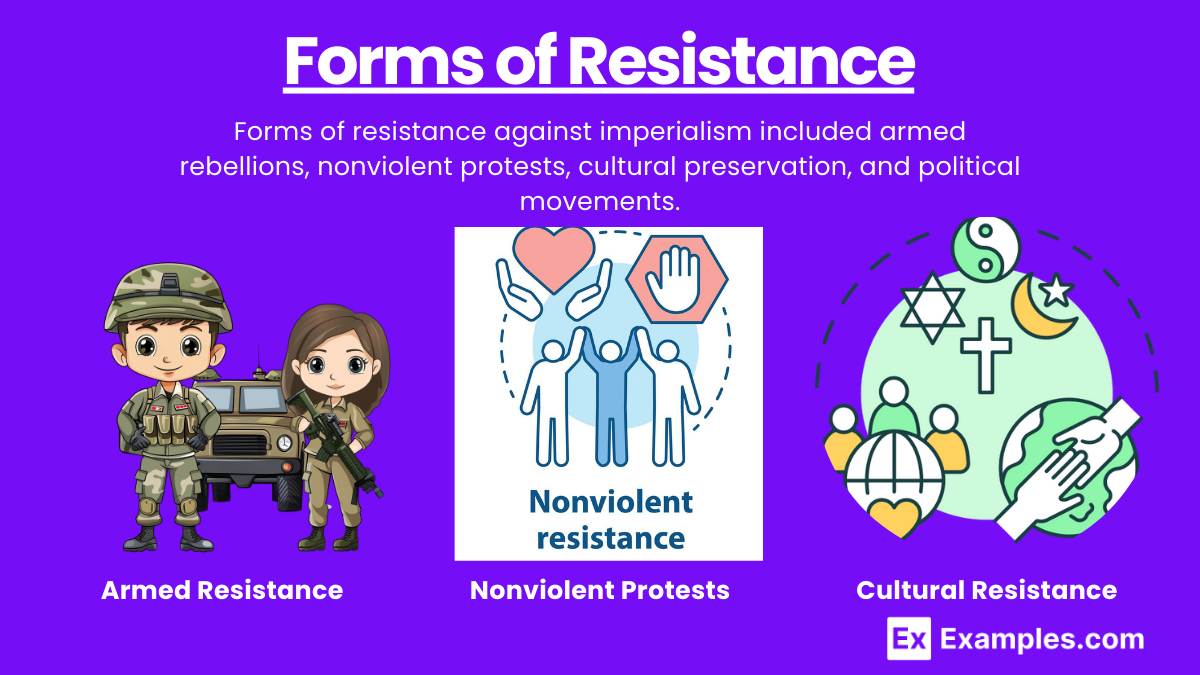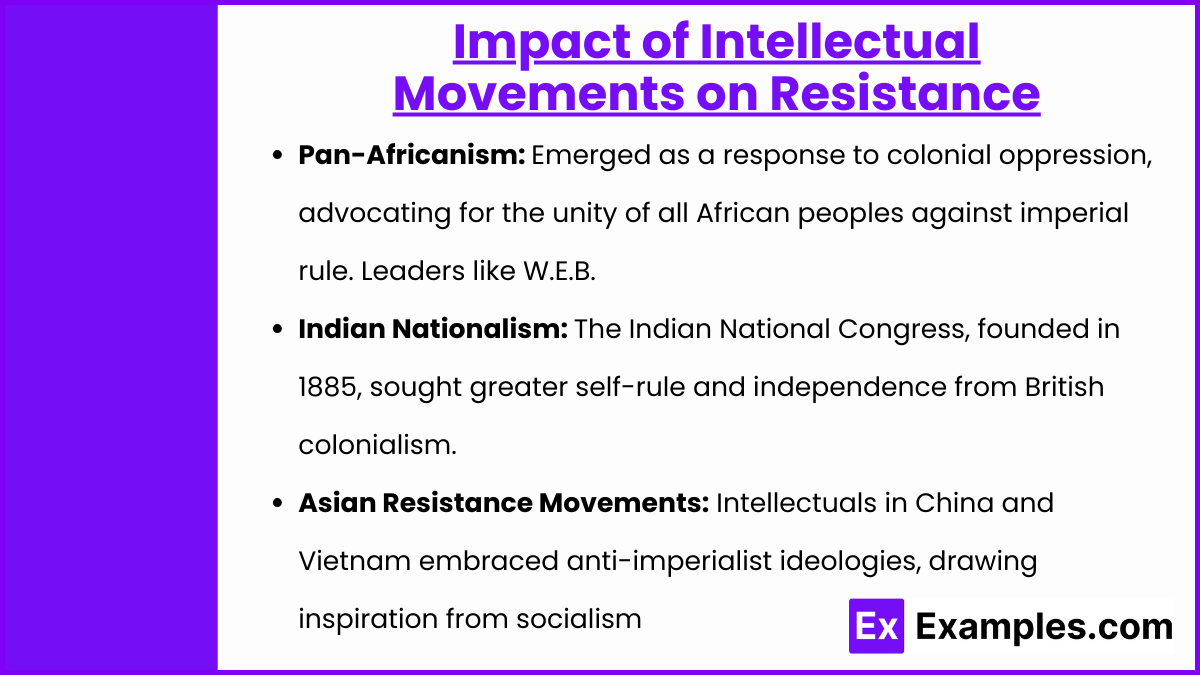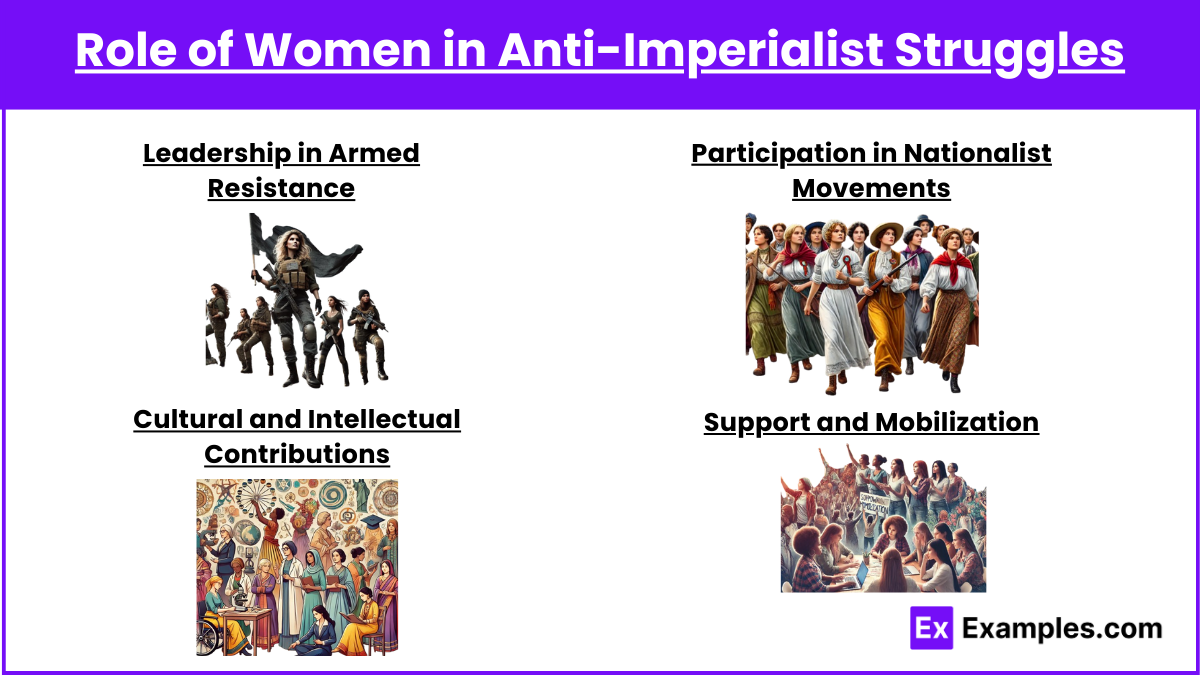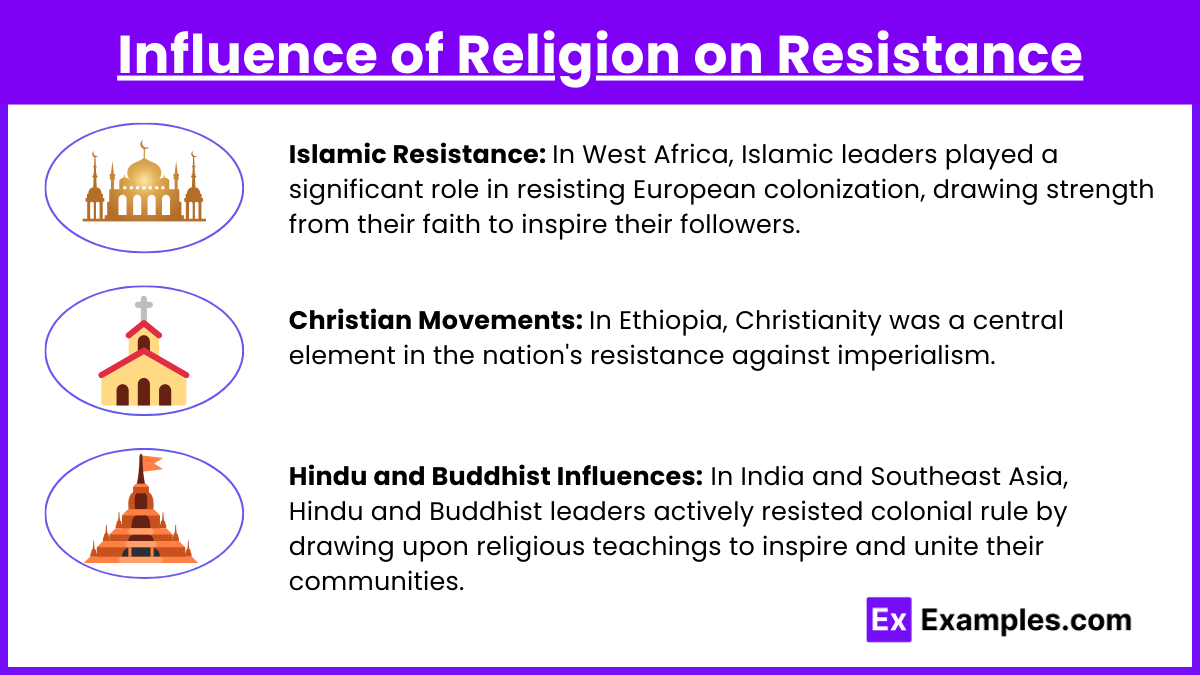Resistance to imperialism refers to the diverse efforts by indigenous peoples and societies to oppose and challenge foreign domination during the 19th and early 20th centuries. These resistance movements took many forms, including armed uprisings, nonviolent protests, cultural preservation, and religious movements, demonstrating the determination of colonized peoples to reclaim their autonomy and identity.
Learning Objective
In studying Resistance to Imperialism for AP World History: Modern, you should learn to identify key resistance movements across colonized regions, analyze the diverse strategies—both violent and non-violent—used to challenge imperial powers, and evaluate the role of local leaders, cultural revival, and nationalism in mobilizing opposition. Additionally, explore how these movements influenced global political thought and ultimately contributed to the decline of imperialism and the rise of independence movements in the 20th century.
1. Overview of Imperialism and Resistance

Imperialism refers to the policy of extending a nation’s power and influence over other territories, often through colonization, military force, or economic domination. From the 18th to the early 20th century, European powers, along with the United States and Japan, aggressively expanded their empires, exerting control over large parts of Africa, Asia, and the Pacific. These imperialist nations sought to exploit the resources, labor, and markets of the colonized regions, often imposing their political, economic, and cultural systems on indigenous populations.
The imposition of foreign rule disrupted traditional societies, economies, and governance structures, leading to widespread resentment and opposition among the colonized people. This led to various forms of resistance as communities sought to defend their autonomy, heritage, and way of life. Resistance to imperialism took many forms, ranging from armed uprisings and guerrilla warfare to nonviolent protests, intellectual movements, and the preservation of cultural identity.
2. Forms of Resistance

Forms of resistance against imperialism included armed rebellions, nonviolent protests, cultural preservation, and political movements. Indigenous populations fought colonial powers through uprisings, guerrilla warfare, and civil disobedience. Leaders advocated for independence, while others used diplomacy, legal challenges, and intellectual movements to challenge foreign domination and preserve their cultural identities.
- Armed Resistance: Many groups took up arms against colonial powers. These uprisings were often intense but struggled against the superior military technology and strategies of imperialist forces. Many indigenous groups chose to resist imperial domination through armed uprisings, engaging in battles against colonial forces. These uprisings were often marked by bravery and fierce determination, but they frequently faced challenges due to the advanced military technology, organization, and tactics of the imperial powers.
- Nonviolent Protests: Some resistance movements used nonviolent methods such as protests, strikes, and boycotts to challenge imperial control and assert their rights. In some regions, resistance movements adopted nonviolent strategies to oppose imperial rule. This approach included organizing protests, strikes, boycotts, and civil disobedience to challenge colonial authorities. Such nonviolent methods were particularly effective in rallying large sections of the population, gaining international support, and undermining the legitimacy of imperial powers.
- Cultural Resistance: Maintaining traditional customs, languages, and religious practices became a form of resistance, serving as a way to preserve identity in the face of colonial assimilation efforts. Another form of resistance was the preservation and promotion of traditional customs, languages, and religious practices in the face of colonial assimilation efforts. By maintaining their cultural heritage, indigenous communities resisted the erasure of their identities and asserted their right to self-determination.
3. Impact of Intellectual Movements on Resistance

- Pan-Africanism: Emerged as a response to colonial oppression, advocating for the unity of all African peoples against imperial rule. Leaders like W.E.B. Du Bois and Marcus Garvey inspired resistance movements across Africa.
- Indian Nationalism: The Indian National Congress, founded in 1885, sought greater self-rule and independence from British colonialism. Intellectuals like Mahatma Gandhi later used ideas of civil disobedience and nonviolent resistance to challenge British authority.
- Asian Resistance Movements: Intellectuals in China and Vietnam embraced anti-imperialist ideologies, drawing inspiration from socialism, communism, and nationalist sentiments, leading to movements against French and Japanese colonialism.
4. Role of Women in Anti-Imperialist Struggles

Women played a significant and often underappreciated role in anti-imperialist movements across the world. They participated actively in resistance efforts, taking on roles as leaders, fighters, organizers, and supporters. Their involvement was crucial in challenging colonial authorities and advocating for independence, demonstrating that anti-imperialist struggles were not solely the domain of men.
- Leadership in Armed Resistance: Women often took up arms and led rebellions against colonial forces. For example, Rani Lakshmibai of Jhansi became a symbol of resistance during the Indian Rebellion of 1857, courageously fighting against British rule. Similarly, in Vietnam, the Trưng sisters (Trưng Trắc and Trưng Nhị) led a revolt against Chinese domination in the first century, inspiring future generations of resistance fighters.
- Participation in Nationalist Movements: In many countries, women were actively involved in nationalist movements, organizing protests, strikes, and demonstrations. In South Africa, women led boycotts against apartheid policies, while in India, they played a prominent role in the Indian National Congress and Gandhi’s nonviolent resistance campaigns. Women like Sarojini Naidu became key figures in India’s independence movement, participating in the Salt March and other acts of civil disobedience.
- Cultural and Intellectual Contributions: Women used their voices to inspire resistance through literature, art, and education. In colonized regions, they worked to preserve cultural heritage, languages, and traditions, often forming organizations to promote indigenous practices. For instance, Queen Mother Yaa Asantewaa of the Ashanti Empire in Ghana not only led armed resistance against British colonization but also inspired her people to maintain their cultural identity.
- Support and Mobilization: Women played vital roles in supporting resistance movements by providing food, shelter, medical care, and intelligence. They acted as messengers, couriers, and even spies, ensuring that resistance efforts could continue despite the challenges posed by colonial authorities. Their ability to mobilize communities and rally support was instrumental in sustaining anti-imperialist struggles.
5. Influence of Religion on Resistance

- Islamic Resistance: In West Africa, Islamic leaders played a significant role in resisting European colonization, drawing strength from their faith to inspire their followers. One prominent example is Samori Touré, a Muslim military leader who established the Wassoulou Empire in present-day Guinea, Mali, and Sierra Leone. Samori Touré organized a formidable resistance against French colonizers in the late 19th century, using Islamic teachings to unite his people and maintain their cultural and religious identity.
- Christian Movements: In Ethiopia, Christianity was a central element in the nation’s resistance against imperialism. Under Emperor Menelik II, Ethiopia stood as one of the few African nations that successfully repelled European colonization. In the Battle of Adwa in 1896, Ethiopian forces decisively defeated the Italian army, marking a rare and significant victory for an African nation against a European power.
- Hindu and Buddhist Influences: In India and Southeast Asia, Hindu and Buddhist leaders actively resisted colonial rule by drawing upon religious teachings to inspire and unite their communities. In India, Hindu leaders like Swami Vivekananda and Bal Gangadhar Tilak invoked Hindu scriptures and philosophy to foster a sense of national pride and resistance against British rule. Similarly, in Southeast Asia, Buddhist monks played a crucial role in anti-colonial movements, particularly in countries like Burma (Myanmar) and Vietnam.
Examples
Example 1: Indian Rebellion of 1857
Indian soldiers (sepoys) rebelled against British rule due to oppressive policies, leading to a widespread but ultimately unsuccessful uprising against colonial control.
Example 2: The Zulu Resistance (1879)
The Zulu Kingdom, led by King Cetshwayo, fiercely fought against British invasion in South Africa, achieving early victories before being defeated.
Example 3: The Boxer Rebellion (1899-1901)
Chinese nationalists, known as Boxers, sought to expel foreign influence and missionaries. Despite international suppression, it reflected China’s strong anti-imperialist sentiment.
Example 4: Maji Maji Rebellion (1905-1907)
In German East Africa, the Maji Maji people resisted German colonial rule, uniting diverse ethnic groups but facing brutal suppression by colonial forces.
Example 5: Ethiopian Victory at the Battle of Adwa (1896)
Ethiopian forces, under Emperor Menelik II, defeated Italian invaders, marking a rare African military victory against European imperialism, preserving Ethiopian independence.
MCQs
Question 1:
Which of the following was a primary cause of the Indian Rebellion of 1857?
A) Introduction of Western education
B) High taxes imposed by British authorities
C) Disrespect of religious beliefs by British policies
D) Establishment of new railways
Answer: C) Disrespect of religious beliefs by British policies
Explanation:
The British introduced rifle cartridges greased with cow and pig fat, offending Hindu and Muslim soldiers, triggering the rebellion against colonial rule.
Question 2:
What was a significant outcome of the Ethiopian victory at the Battle of Adwa (1896)?
A) Expansion of British control in Africa
B) Ethiopia maintained its independence
C) Establishment of a European protectorate
D) Increased Italian influence in Ethiopia
Answer: B) Ethiopia maintained its independence
Explanation:
The Ethiopian victory ensured the nation remained free from colonial rule, becoming a symbol of successful African resistance against European imperialism.
Question 3:
Why did the Zulu Kingdom initially succeed in resisting British forces during the Anglo-Zulu War of 1879?
A) Superior military technology
B) Use of guerrilla tactics
C) Strong leadership under King Cetshwayo
D) Support from other African tribes
Answer: C) Strong leadership under King Cetshwayo
Explanation:
King Cetshwayo’s effective leadership and well-organized Zulu military tactics enabled early victories against British forces despite inferior weaponry.


